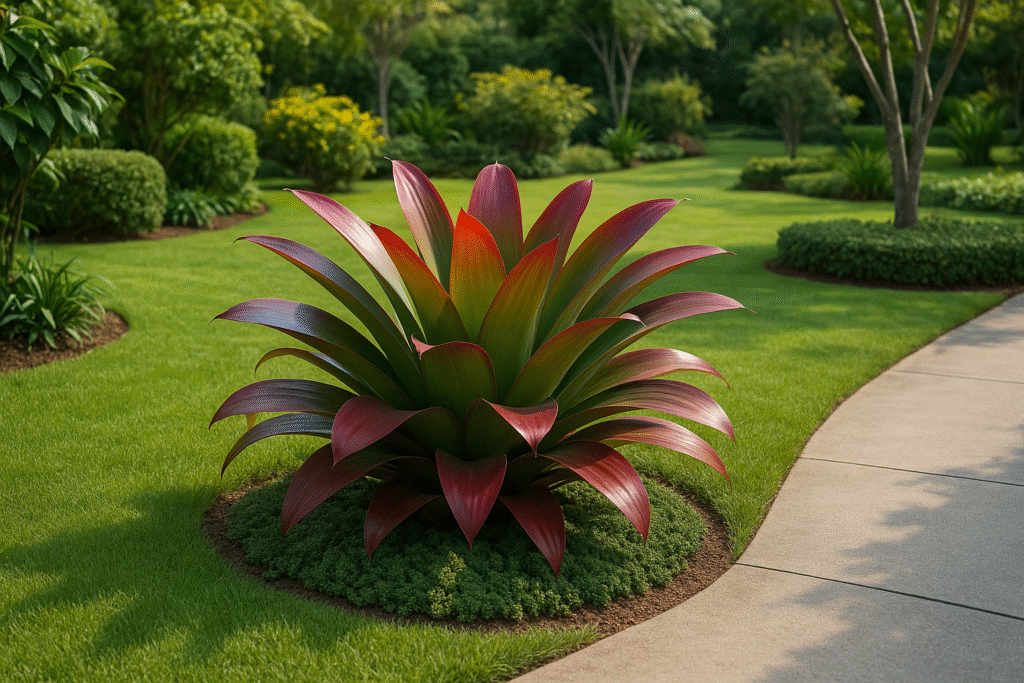The Alcantarea imperialis, commonly known as the imperial bromeliad, is one of the most majestic species in the bromeliad family. Native to Brazil, especially the Serra dos Órgãos region in Rio de Janeiro, this plant stands out for its impressive size, architectural form, and remarkable resilience. It has become a true icon in tropical and contemporary landscaping.
Origin and Main Features
The imperial bromeliad belongs to the Bromeliaceae family and is native to the Atlantic Forest. It grows slowly but can reach over 5 feet tall and up to 6.5 feet wide when mature. Its thick, arching leaves form a symmetrical rosette that often collects rainwater in the center.
This plant is not only beautiful but also very resistant. It tolerates full sun, heat, and drought, making it perfect for low-maintenance landscapes. Leaf colors can range from green to reddish or purplish depending on sun exposure and variety.
A Single, Stunning Bloom
One of the most fascinating traits of the Alcantarea imperialis is its flowering. It blooms only once in its life—usually after 8 to 10 years—but the floral display is unforgettable. The flower stalk can grow up to 8 feet tall, with hundreds of tiny red, purple, or cream flowers.
After blooming, the main plant slowly dies but often produces pups—new shoots that ensure the plant continues through propagation.
How to Grow Imperial Bromeliad
You don’t need to be an expert gardener to grow this plant. Just follow these basic care tips:
- Light: Prefers full sun or partial shade. More sunlight brings out deeper leaf colors.
- Soil: Needs well-draining, organic-rich soil. A mix of potting soil, coarse sand, and compost works well.
- Watering: Water moderately, keeping the rosette center moist—but avoid stagnant water.
- Fertilization: Use a balanced fertilizer (10-10-10 or 20-20-20) every 2 months. Apply to soil or spray over the leaves.
Perfect for Landscaping
The imperial bromeliad is often used as a focal point in gardens, public spaces, and eco-friendly landscapes. Its bold form works well with stones, grass, wooden decks, and tropical plants like palms, heliconias, and agaves.
It also looks stunning in large decorative pots placed at house entrances or patios.
Fun Facts and Conservation
- Once named Vriesea imperialis, it was reclassified as Alcantarea imperialis.
- It is one of the few bromeliads that can handle long hours of direct sun.
- It attracts pollinators and contributes to biodiversity in tropical gardens.
- Its wild populations still depend on the protection of Brazil’s Atlantic Forest.
Conclusion
The imperial bromeliad is a tropical treasure. With its dramatic appearance, hardy nature, and spectacular bloom, it brings beauty and structure to any garden. If you want a showstopping plant that requires little care and makes a big impact, Alcantarea imperialis is the one.

🌿 Enhance Your Bromeliad’s Beauty

